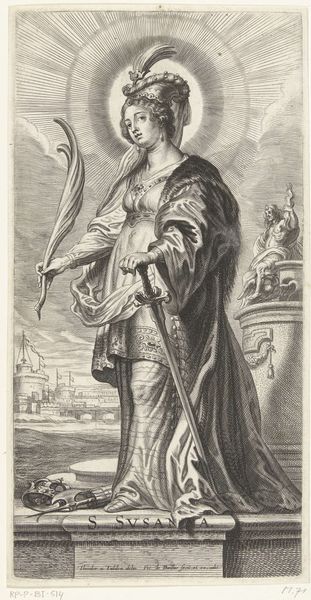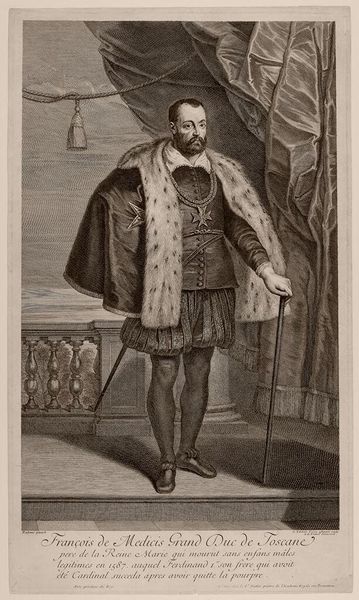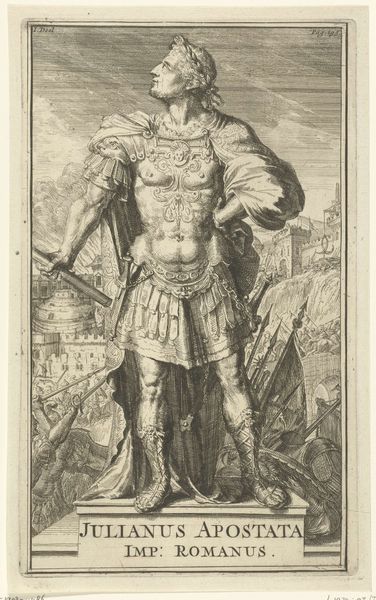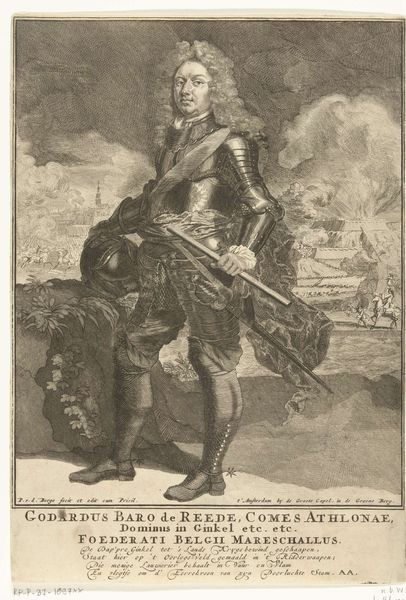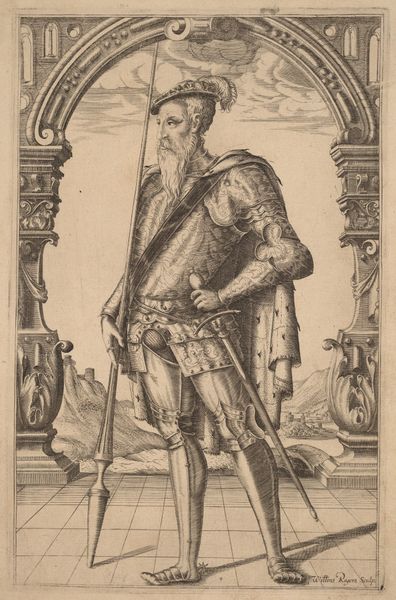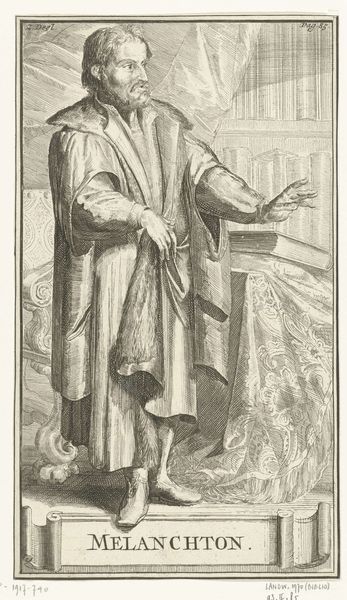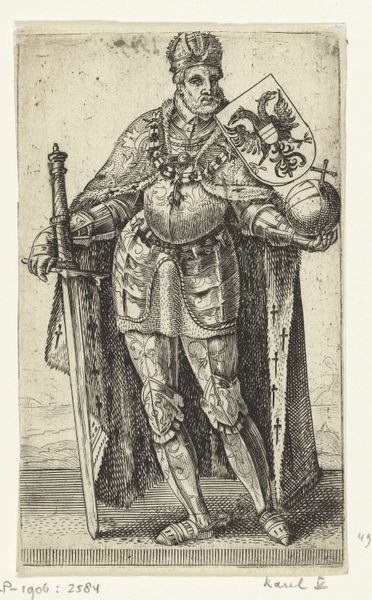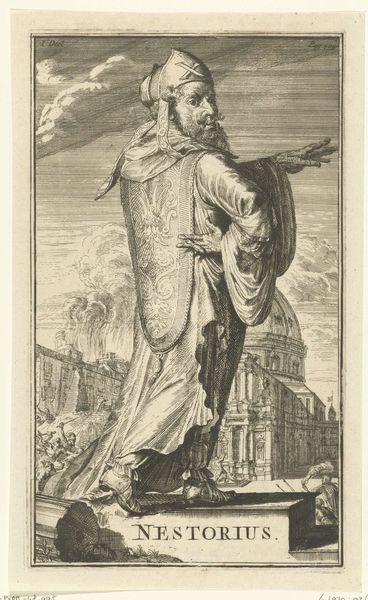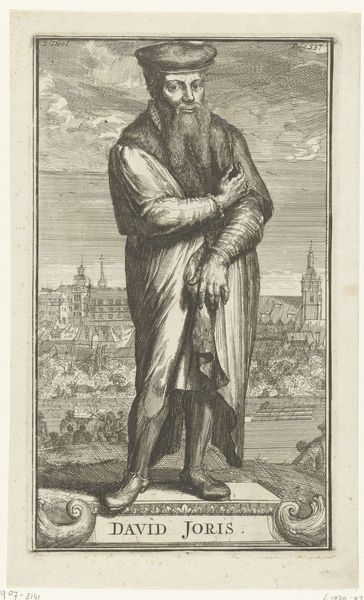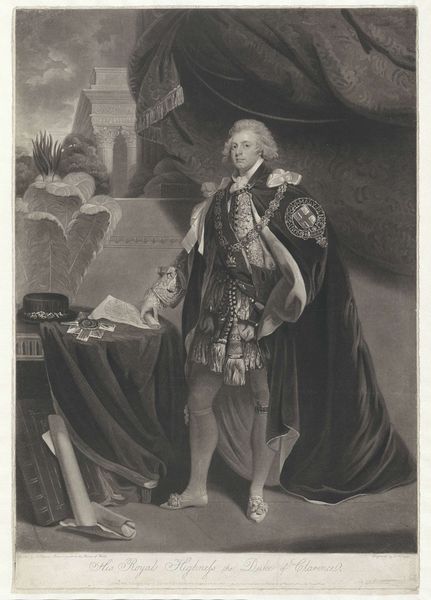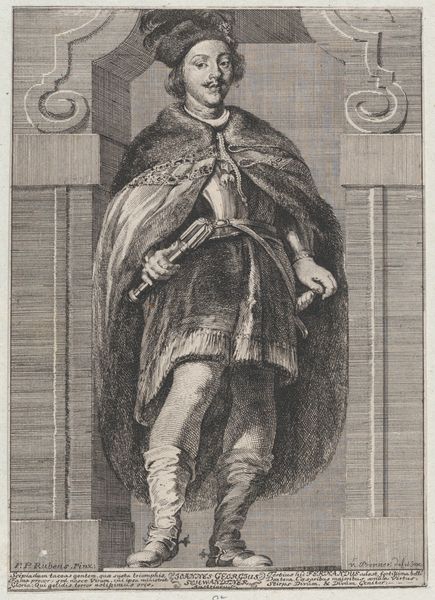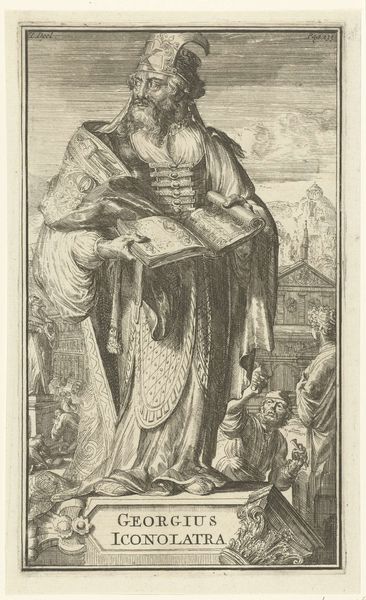
Copyright: Public Domain: Artvee
Curator: Before us, we have Anthony van Dyck’s “Robert Rich,” oil on canvas, dating from around 1632 to 1635. Editor: My first impression is one of contained swagger. There's a visual narrative being constructed, and the red cloak suggests this is a person who carries some weight. Curator: Absolutely. Robert Rich, the 2nd Earl of Warwick, was a significant figure in early 17th-century English politics. His wealth derived partly from the enslavement of Africans in the Americas. Editor: The painting holds that complex history in its symbols. His stance, that confident gaze—they speak of power, yet there’s a melancholy to it all. Notice the naval battle in the background, reduced in scale—a detail almost easy to miss. Curator: Precisely. Warwick was deeply involved in naval affairs and colonial ventures, which intertwined his personal power with the violent realities of his time. The inclusion of his armour underscores a militaristic understanding of manhood tied to the assertion of dominance in England and in foreign conflicts. The red drapery could allude to the blood that built his estate. Editor: The silvered fabrics create a subtle language. The clothing suggests wealth and power, while lace ruff softens the whole composition, complicating any reading of singular masculinity. His delicate slippers suggest his distance from work on the land. What do you read in this softening? Curator: This speaks to the evolving visual language of aristocracy. Van Dyck masterfully navigates these shifting symbols, offering a portrait that acknowledges power while subtly highlighting its inherent contradictions. This man oversaw unspeakable acts. Is it possible the slight tension we sense hints at his own internal reckoning? Editor: Or perhaps van Dyck is signalling the sitter’s moral complexity through those contrasts of hard and soft. It encourages me to consider this individual within a moral and political context. Curator: Considering the rise in social consciousness it's so crucial we critically examine artworks such as this—the ways it was commissioned, the narratives it subtly promotes, and whose stories are being left out in the process. Editor: It certainly serves as a potent reminder of the power of portraiture not only to document but also to construct identity, shaping narratives across time and space through specific artistic techniques.
Comments
No comments
Be the first to comment and join the conversation on the ultimate creative platform.
